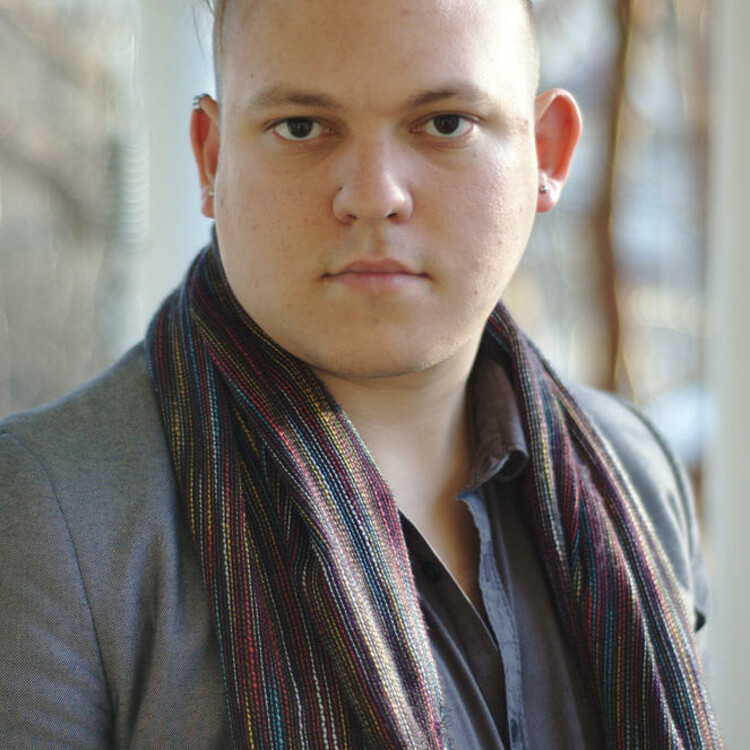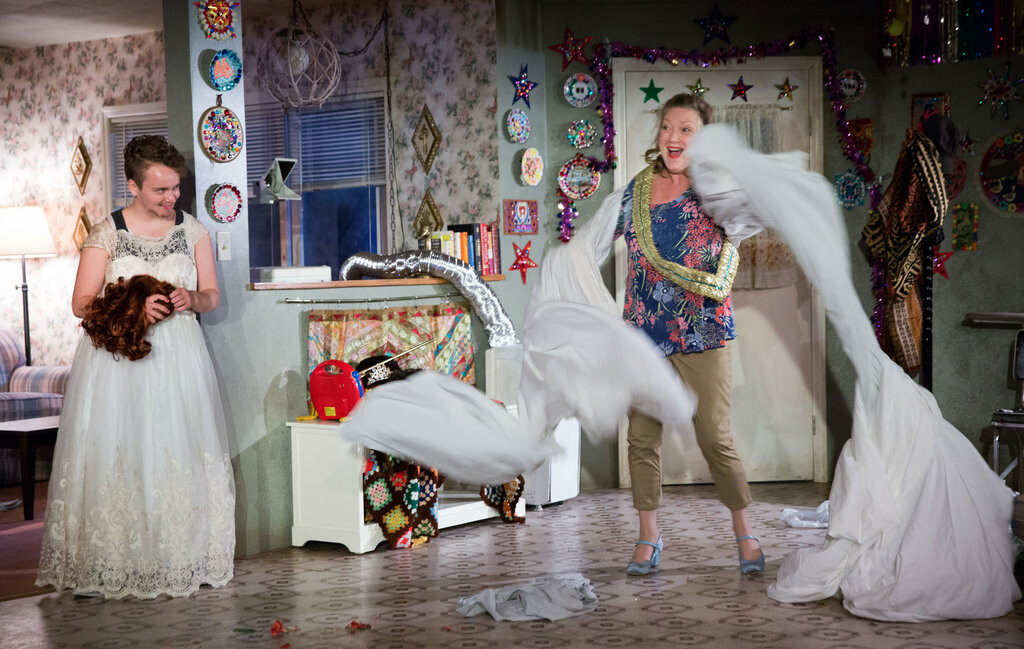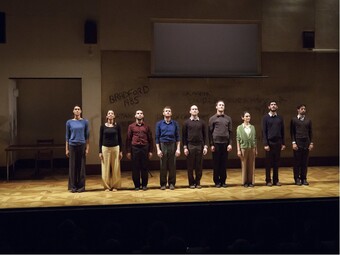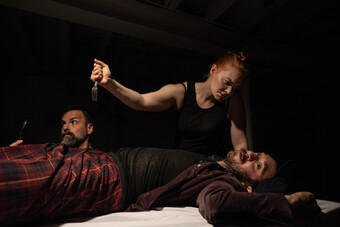How do you create a mainstream queer theatrical culture? Many believe the answer to this question is as simple as gaining representation—perhaps in terms of the content of shows, perhaps in terms of their creation. However, even as representation increases, there doesn’t seem to be much evidence of a truly and uniquely queer theatrical culture—which, for this argument, I am defining as a unique set of practices, aesthetics, and philosophies that are recognizable to an average audience member. Mainstream theatrical culture, by contrast, is accessible to general audiences.
As a queer theatremaker, I believe it is my obligation and the obligation of all other self-identified queer theatremakers to create our own theatrical culture. To do this, we must first decide what makes a play queer.
Popular plays with content related to lesbian and gay communities exist, but they often do not truly address queer issues or identity. In these cases, gayness is an element that a theatremaker uses to show diversity without engaging with it; the play exists for straight people to watch. A queer play, though, is one that engages in a discourse about identity and all the political, social, and philosophical implications of said identity. Queer plays exist without a straight lens and give queer people agency within their own lives. In our current mainstream American theatre culture, we face a substantial absence of queer plays.
Writer Sarah Schulman, in a 2005 interview with Slate, stated:
At this point, to simply represent or acknowledge that gay people exist is no longer inherently progressive, and to depict gay people as people who have no agency is retrogressive. This point of view has only been proven true, again and again, in the years since then.
Schulman is correct that representation in plot alone is not—and cannot—be enough. There is nothing progressive or revolutionary or queer about another show where a cis gay man exists in a straight story as a subplot. Further, there is nothing progressive about yet another story on coming out. Rather than building empathy with straight audiences, these stories pander to them, minimizing the very real experience of what it’s like to struggle with one’s identity. By providing a cheap catharsis—often through some form of reconciliation with a straight relative—these gay plays are, in essence, saying that the journey of identity is over once straight people accept you. This is offensive and, to echo Schulman, retrogressive, yet it still exist in a large percentage of mainstream gay plays.
Queer plays exist without a straight lens and give queer people agency within their own lives. In our current mainstream American theatre culture, we face a substantial absence of queer plays.
To establish a mainstream queer theatrical culture, we also need to address the methods we use to make theatre. The current method is undeniably tied to—and, by extension, supports—a cissexist and homophobic system. We continue to see a hierarchical method where a small groups of artists make all the decisions for a production. This method is based in the patriarchy, and the continued use of it perpetuates oppression in the theatre.
If we define the verb “to queer” as “to interrogate and disrupt traditional hierarchies,” then it is impossible to claim a queer process while still playing into patriarchal notions of hegemony. We must go beyond queering the product and also radically queer the process. Will Davis offers a vision of what this looks like in his HowlRound essay “Queering the Room,” which includes the decentralization of the director. No longer, in a queer theatremaking process, must the director be the singular visionary but, rather, a leader in the collaborative process of creating a vision.
Let it not be said, however, that no queer plays exist. They certainly do and are valuable contributions to building a queer theatrical culture. That said, these experimental works are typically only seen by an elite group of metropolitan queers. So we—those of us working in the experimental queer theatre community—must create queer plays that are accessible, both geographically and stylistically, to bigger audiences.
It is to this end that I propose a queer reclamation of the theatre—that queer artists actively and intentionally retake theatrical genres and forms that are typically outside of the scope of “queer plays.” Familiar styles—like musicals, kitchen sink dramas, and history plays—should be used as the structure but filled with queer themes, characters, and ideas. Queer artists should reclaim these genres as their own not just because queer art can exist in any genre, but because more popular genres are, by definition, more accessible to audiences. Through this reclamation, we can move from queer plays existing as a marginalized genre to a true mainstream theatrical culture.











Comments
The article is just the start of the conversation—we want to know what you think about this subject, too! HowlRound is a space for knowledge-sharing, and we welcome spirited, thoughtful, and on-topic dialogue. Find our full comments policy here
Ezra - thank you, thank you for writing this - more discourse on queer art is always a good thing. It's one of my favorite conversations to have, and I'm glad you're thinking about it and looking for explanations and new vistas.
There're a few things I want to challenge you on. I'm not confident that a queer mainstream is possible, or even desirable. "Mainstream" is a pretty dirty word to a lot of people, and something that, depending on one's definition, might actually contradict the idea of queerness itself. I think what you're after (I am too) is for gay and queer work to be popular - to reach large audiences of both queers and not-queers - without compromising what makes it individual, countercultural, and representative of values, histories, and identities not valued by whatever and whoever's connoted by "mainstream."
Two positive examples of queer mainstream theater I can think of might be Fun Home and Indecent. Broadway runs, a national tour, lots of subsequent productions. Both are huge, true pioneers, in how they present lesbian/queer female identity & desire onstage, and to large audiences.
I think your writing about providing an "entry point" to queer work is absolutely spot-on. I believe that presentation, approachability, and external dramaturgy matter. You're so right about the successful workshopping and touring of 24-Decade - it brought genuinely queer work to a lot of people. It helps that it's queer in both form AND content, and Mac's so good at ingratiating the show to the people (Mac speaks so eloquently in interview's about judy's methods and ethos).
I will offer a counternarrative to what you've written about Hir, and mention that I think that play baffled and alienated a lot of the "normies" (longtime subscribers) at Steppenwolf (my local production). There are lots of reasons (a one-size-fits-all approach to public-facing dramaturgy; laziness; a disinclination or outright aversion to speaking too brashly about a work's gay and queer themes in marketing materials) why Steppenwolf failed that and other plays with an agenda to disrupt the theatrical status quo. You're not wrong to invoke it here - I just think it merits further nuanced discussion as to what it does and how queer vs nonqueer audiences respond to it.
Rob, thank you so much for your comments and for reading! I think that your points are well taken but I do want to push back on two things.
First, I don't agree that queer and mainstream are mutually exclusive. I think that the mainstream has taken on a connotation of being compromised or lowest common denominator due to the work that is making it into the mainstream. I think that the creation of a mainstream theatrical culture will shift the overton window of the mainstream away from the watered down work that currently makes up the mainstream. I think that Fun Home and Indecent are good examples of what this might look like. I think that, in a mainstream queer theatrical culture shows like these would become more plentiful and popular. In other words, through the process of establishing a mainstream theatrical culture theatre as an industry would change and so would the audience. As such what a mainstream audience will accept will meaningfully change.
Second, I think that you raise some very strong points about Hir. I too saw the Steppenwolf production and I think that your argument about how the audience responded are very accurate. However, I think that the continued programming of the play in various regional theatres across the country is a win in and of itself. Early pioneers of a mainstreame theatrical culture--which I think Hir, Head Over Heels, and Fun Home all are examples, in my opinion, of this--succeed because they start to get audiences more comfortable with queer plays. This isn't an immediate process so it is understandable that audiences may struggle with it. Also, as you pointed out, there are also some more specific pieces of criticism of the way that specific production was marketed and produced.
Thanks for this article. I recognize a lot of what you are describing. I have done some of this myself (the good and the bad). However, I am not clear what you mean by a mainstream queer theatrical culture? It sounds a bit like audience development, outreach, deconstructing plays, having complext gay characters... But all of that is happening? Is it all of it? Some of it? What makes it queer?
Javier, thanks for your comment and thanks for reading! I think that a mainstream theatrical culture is one where we do all of the things that you describe (complex queer characters, deconstructing plays, etc) while also creating new methods of making theatre in a non-hierarchical way. I think that a lot of these elements do exist but often not together. What I think we need to do is unite all of these elements in a way that will be accessible to audiences. I think that there are a lot of different ways to do that but one successful way that I've found is the queer reclamation that I write about in this essay.
Thank you for the article! You have a great writing voice. I particularly enjoyed your phrasing of "an elite group of metropolitan queers."
I really appreciate this article, but I wish it highlighted more artists/organizations with current efforts in relation to what is being written about: Trans Lab Theater, About Face Theatre, Split Britches, to name a few.
Definitely! There are lots of great companies working in this regard. I focused on Mac just brevity's sake but they aren't alone, by any means, in working to create a mainstream queer theatrical culture. Thanks for reading!